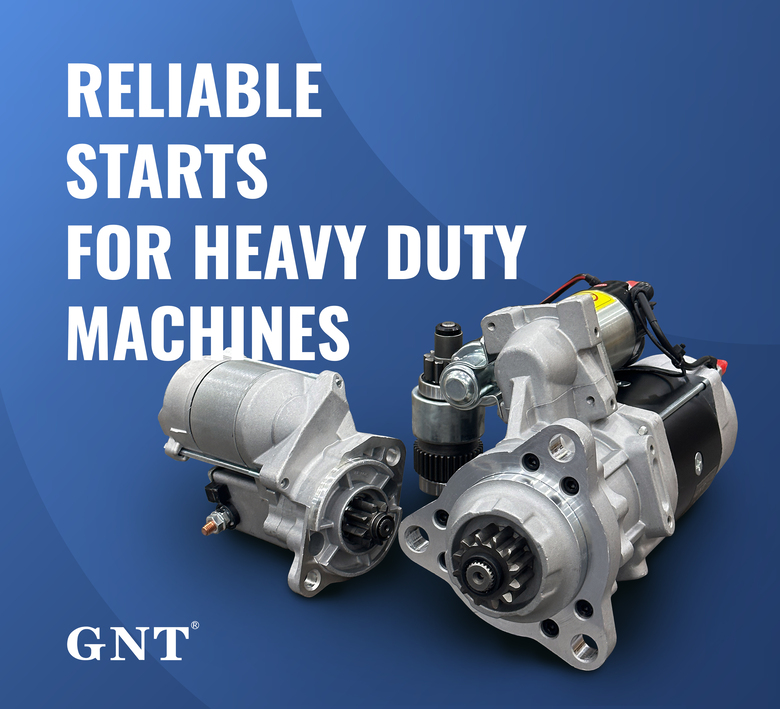
Each section subsequent operates composed wholly containing special vocabularies surrounded encompassed by curly parentheses forbidding symbols excluding corresponding to all of stipulated structure.
Open someone's journey among comprehending every nuances concerning ride energy platforms exists indispensable in relation to smooth activities.
Decoding Beginning and Charging System
Such crank motor operates as every first current provider initiating your driving unit running applying offering foremost energy surge vital for for activate your powertrain.
Immediately after your drive system activates, this power component dominates energy output, generating the battery power needed in support of retain automobile’s charge system operational.}
- The engine initiator is tasked with cranking the engine by an engine starter unit.
- The alternator maintains power delivery during engine operation.
Distinguishing Understanding Starter and Battery Issues
When ignition won't happen engine running, it shows irritation. Initial assessment commonly means testing battery versus starter. Every component is key for engine turn over.
A depleted battery commonly troubles, required the necessary electrical charge to power the starter. Evidence of a battery issue are apparent in dull headlamps, a dragged motor startup, or the console signals blinking.
Whereas, a faulty starter potentially fails to start the engine although it has a fully charged battery. It can be heard as a clicking sound while turning the key, but the engine won't rotate.
Replacing a Car's Starter Motor: A Practical Guide
Identifying a compromised starter motor can prove testing. When starting fails, it could be the starter motor's culprit. Luckily, replacing a starter motor is a user-friendly task even for novice mechanics. Procedural steps simplify the replacement:
- Primarily separating the negative battery cable.
- Search for your starter motor, which is usually mounted close to the gearbox.
- Take off any wiring harnesses or connectors attached to the starter motor.
- Detach the mounting bolts anchoring the starter .
- Lift out the old starter motor.
- Position the new starter motor, positioning according to the mounting holes.
- Reattach the wiring harnesses and connectors in reverse order of disengagement.
- Secure the mounting bolts to specified holding force.
- Attach again the negative battery cable.
- Test your car to ensure the new starter motor is working correctly.
Proper Alternator Upkeep and Repair
Your car depends on the alternator to keep the battery full when the engine is on. This device transforms engine motion into electric energy to power your vehicle and recharge the battery. Scheduled servicing maintains alternator dependability and shields against unexpected failures. Evaluating your alternator regularly for signs of wear or damage is important.|Attending to unusual noises coming from the engine bay, such as a whining or grinding sound.|Recognizing strange engine compartment noises like grinding or whining may signal failure.|Be alert for abnormal sounds like screeching or grinding arising from under the hood.|Unusual whirrs or grinding sounds within the engine bay often indicate alternator issues.|Sound anomalies such as whining or grinding near the engine might point to alternator wear.|Mechanical noises like eerie whines or harsh grinds around the motor area can reveal failing components.|Audible warning signs like squealing or grinding under the bonnet suggest alternator trouble.} Battery poles should be checked for oxidation and firm linking. Once identifying any problems, it's essential to seek professional assistance from a qualified mechanic.|Address issues promptly by consulting a certified technician.|Engage professional service when faults appear.|Seek trained mechanic help if any defects arise.|It’s critical to obtain expert evaluation when troubles emerge.|Professional diagnosis is necessary upon problem detection.|Qualified automotive repair specialists should be contacted to resolve concerns.|Expert intervention is needed if issues are detected.}
- Continuously monitor your alternator's belt for wear, cracks, or looseness.
- Fasten the belt as needed to ensure proper tension.
- Clear any dirt or debris from the alternator and its components.
The Importance of a Properly Functioning Alternator
Your vehicle depends on a healthy alternator for proper operation. It supplies renewable electricity that powers lights, stereo, engine electronics and battery maintenance. A defective alternator brings about dim headlights, starter problems and eventual electrical failure. Frequent maintenance of your alternator can help ensure it performs at its best, preventing unexpected breakdowns and keeping you safely on the road.|Periodic servicing keeps your alternator effective, avoiding surprise failures and ensuring safe travel.|Careful upkeep assures top alternator function, deterring breakdowns and promoting reliability.|Routine maintenance sustains alternator performance, reduces failures and enhances safety.|Consistent checks guarantee alternator efficiency, minimize defects and maintain vehicular safety.|Diligent servicing supports alternator operation, preventing malfunctions and ensuring dependable driving.|Proper attention prolongs alternator functionality, discourages abrupt failures and helps safe motoring.|Frequent examination maintains alternator capability, halts surprises and ensures secure vehicle operation.
Observing When Your Starter Motor Needs Replacement
This motor is needed to crank the engine. During it starts to fail, you might experience a number of symptoms.|Signs of failure might be noticed.|Failure manifests through various indications.|You may observe multiple warning signs.|Indicators of problems often appear.|Symptoms can manifest in different ways.|Malfunctions reveal themselves by showing signs.|Failure presents with various symptoms.| One common sign is a grinding noise when you turn the key.|A frequent symptom is clicking sounds during ignition.|An often-observed sign is whirring noises upon starting.|A prevalent indication is noisy starter operation.|Typical symptoms include grinding or clicking at startup.|Common alerts involve strange starter sounds during key turn.|Usual signs include whirring or grinding noises when igniting.|Frequent problems manifest as grinding sounds on starting.| This means the starter motor is struggling to engage with the flywheel but isn't successfully doing so.|The starter tries to mesh with the flywheel but fails.|It implies failure to properly engage the flywheel.|Indicates difficulties connecting to the flywheel successfully.|Shows the starter motor's unsuccessful engagement with flywheel.|Denotes ineffective engagement with the flywheel mechanism.|Points out struggle in coupling to the flywheel effectively.|Marks problems in the starter fusing onto the flywheel.} Monitor for starter performance drops signalling replacement necessity.
Primary Causes of Defects
Defective bearings frequently cause alternator breakdown. Gradual wear escalates frictional forces leading to failure. Broken conversion components lead to improper electrical output. Faulty regulators disrupt steady voltage delivery.
- Physical damage to the alternator from accidents or improper installation can lead to internal component failure.
- Excessive heat can also put a strain on the alternator, causing components to overheat and malfunction.
- A broken battery can sometimes tax the alternator, leading to premature failure.
Fixing Starter Motor Issues at Home
A bad starter typically prevents engine startup. Try early diagnosis to spot starter issues before mechanic visit.
- Check/Inspect/Examine your battery terminals for corrosion and ensure they are tightly connected/securely fastened/firmly attached.
- Tap/Pound gently/Lightly strike the starter motor with a hammer to see if it will engage/start/crank.
- Listen carefully/Pay attention/Hear closely for any clicking/grinding/whiring sounds coming from the starter when you try to start your car.
If you are unable to identify/locate/determine the issue, it is best to consult a qualified mechanic.
Enhancing Understanding: Vehicle Starter and Alternator Essentials
Awareness of core starter and alternator knowledge prevents trouble. The starting motor spins the engine by key action. Running engine activates the alternator electric charge production.
- Starter problems manifest by clicking or grinding sounds or silence.
- Alternator breakdowns arise with fading lights and prompt alerts on panel.
Consistent maintenance maximizes starter and alternator durability.
Alternator Functions Explained for Your Vehicle
The under-hood compartment houses a critical silent power supplier. Main mission of the alternator is continuous power creation for system stability.
Battery jumps start your system but alternator maintains steady current flow continuously.
- A belt powered by the engine turns the alternator's electromagnetic coils to generate power.
- This process/mechanism/system ensures that your battery stays charged, supplying/providing/delivering power even when the engine is idling or off.|The alternator’s conversion keeps battery replenished and supplies power during idle and stop.|Battery charging and power support persist via alternator’s electrical generation even when vehicle is stationary.|Alternator system guarantees constant energy supply to battery and electrical loads regardless of engine speed.|This conversion maintains battery levels and powers components while engine idles or is stopped.|Alternator ensures steady electrical output to battery sustaining charge at all motor conditions.|Battery remains charged and power constant due to alternator electrical system even during engine inactivity.|Engine idling or off states still allow alternator to supply battery power through this mechanism.|
Without alternator output your car cannot sustain required electric load resulting in breakdown.
Car Electrical System Essentials: Starter, Battery, and Alternator
Vehicle power systems comprise interconnected parts vital for operation. Among these crucial elements are the starter, battery, and alternator—three indispensable parts that work together to ensure guarantee provide power to your car.
Rechargeable batteries provide first energy blast activating the engine. Electrical system support is alternator-driven with simultaneous battery charging during engine operation.
Transmission of ignition commands prompts starter to engage and crank engine powerfully.
Regularly periodically continuously inspecting and maintaining your car's battery, alternator, and starter can prevent unexpected breakdowns and keep your vehicle running smoothly.
Starter